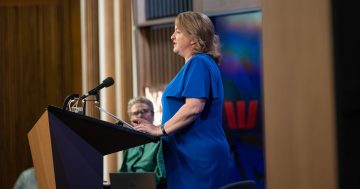Financy* says women’s financial progress to gender equality has slowed again due to COVID.
 Women’s financial progress to equality with men suffered a setback in the June quarter, as COVID shock factors put the brakes on like a female-led recovery at the start of 2021, the latest Financy Women’s Index (FWX) June quarter report shows.
Women’s financial progress to equality with men suffered a setback in the June quarter, as COVID shock factors put the brakes on like a female-led recovery at the start of 2021, the latest Financy Women’s Index (FWX) June quarter report shows.
While the FWX rose by 0.9 per cent to 72.2 points in the June quarter, the pace of progress is slower than the 1.06 per cent recorded in the March quarter 2021.
The June quarter result was helped by a fresh record high in the number of women occupying ASX 200 board positions to 33.5 per cent and a narrowing of the gender gap in the underemployment rate.
However as we dig deeper into women’s financial progress, the closing of the gender gap in the underemployment rate, appears less affected by actual progress and rather the opting out of more work by women.
“While the long-term trend for women’s economic progress is still one of improvement, as we continue to combat the pandemic, women remain vulnerable to lockdowns and the disruptions from public health and social distancing orders,” said Financy CEO Bianca Hartge-Hazelman.
“The concern is that the longer the pandemic continues, the more the burden of unpaid work seems to rise and the harder it is for many women to participate in the workforce to their potential,” said Ms Hartge-Hazelman.
Key Results
- The Financy Women’s Index rose 0.9 per cent in the June quarter to 72.2 points from 71.6 points in March helped by a long-running structural improvement in corporate board diversity and a closing of the gender gap in the underemployment rate.
- Whilst the Index is down by 1 per cent for the year to date from 72.8 points in June 2020, it is 4 per cent above its December 2019 score.
- COVID shocks were evident by weakness in both the gender pay gap and hours worked by women relative to men.
- The total timeframe to achieving gender financial equality remains 101 years based on the worst performing FWX sub-index; unpaid work.
- The timeframes to achieving equality in the gender pay gap is 21 years, in employment is 31 years, in board diversity is seven years, in underemployment is 16 years and in superannuation is 40 years.
Unlike any other economic crisis in Australia’s history, the fallout from the COVID-pandemic has exacerbated the financial inequalities faced by women and the most vulnerable.
In the March quarter, the Australian economy was picking up, helped by a female-led employment recovery in sectors hard hit by the pandemic such as Retail Trade and Food and Accommodation Services.
However, things started to come off the boil in June and the number of monthly hours worked by females fell by 2.3 per cent, almost five times that seen among males and in contrast to a 4.6 per cent gain for women in the March quarter.
The gender pay gap also widened to 14.2 per cent from 13.4 per cent, reflective of the biggest dollar difference between men and women’s full-time weekly wages since 2016.
“While the FWX rose slightly in the June quarter, the coronavirus pandemic and associated lockdowns appear to be continuing to exacerbate existing financial inequalities between men and women in critical areas like pay and hours worked,” said AMP Chief Economist Shane Oliver.
“But even abstracting from the impact of the pandemic we have a long way to go before women attain financial equality with men.
“In some ways the pandemic – by accelerating progress towards more flexible working – may ultimately help progress towards financial equality for women.
But at this stage we are still a long way from that.
In the 12-months to date, the FWX is down 1 per cent from a record high of 72.9 points in June 2020.
But when we compare the FWX score to December 2019, progress is up a much more positive 4 per cent.
The Women’s Index June report supports the argument for immediate attention at a government and business level to address long-standing financial inequalities that directly impact the most vulnerable, particularly women, during times of crisis.
It will take at least 21 years for parity to be achieved in the gender pay gap, at least 31 in employment, 16 years in the underemployment rate and 7 years for 50/50 gender diversity to be achieved on ASX 200 boards.
Caroline Stewart, CEO of Ecstra Foundation observed that “financial inequality remains a major obstacle to the progress of women, including women in caring roles.
“Ecstra strongly supports the publication of Financy Index, which highlights the challenges women face in relation to gender equality and financial security, said Ms Stewart.”
Overall, the most significant obstacle relates to unpaid work.
It will take 101 years before equality is achieved in this area and before we can say equality has been achieved across all areas of financial inequality measured in the FWX.
*Financy creates and publishes a variety of content on women’s money matters.
This article first appeared at financy.com.au.











